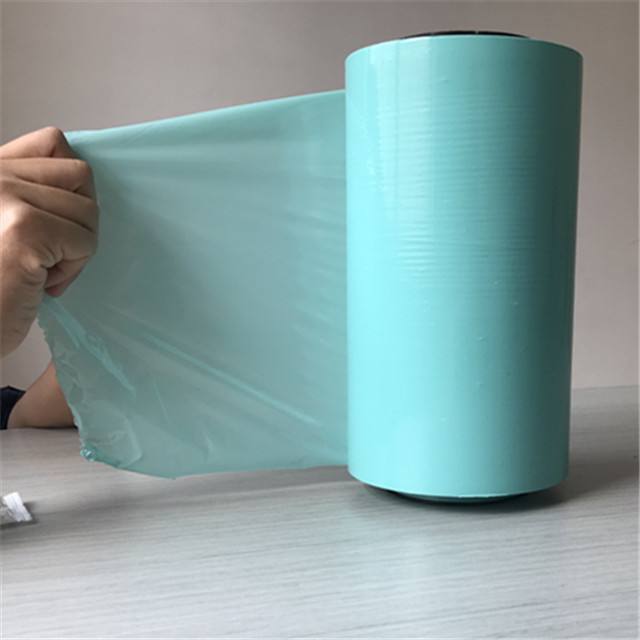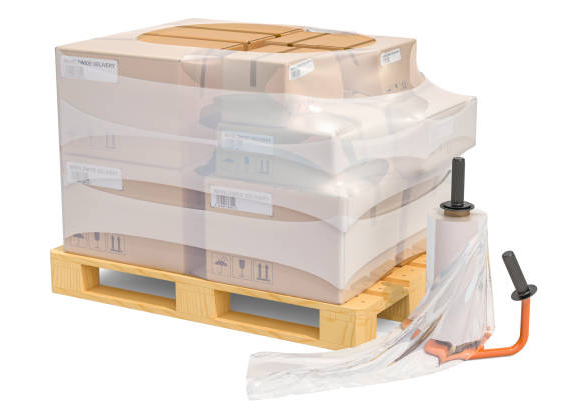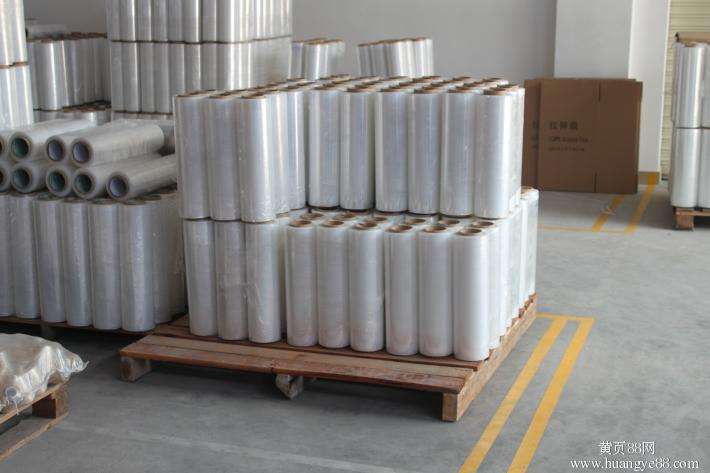Are you looking for a cost-effective and durable solution for packaging and securing your products? Look no further! In this guide, you’ll discover the many benefits of using PE stretch film, including its cost-effectiveness, durability, and environmental friendliness.
Cost-effective
Lightweight
Easy to use
Durable
Environmentally friendly
Learn about PE stretch film properties, applications, and tips for maximizing its benefits. With a global market value of over $20 billion, PE stretch film is a must-know for any business. Read on to learn how you can use PE stretch film to secure and protect your products.

1. Definition of PE stretch film
PE stretch film, also known as polyethylene stretch films, is a stretchable plastic film made from polyethylene. It wraps and secures items for transportation and storage, keeping them safe from dust, moisture, and other environmental factors. The stretch film can be applied manually using a dispenser or handle or using a stretch wrap machine. PE stretch film is available in various thicknesses and widths and can be customized to suit the specific needs of a particular application.
Three types of polyethylene that are commonly used in the production of PE stretch film are:
1. Low-Density Polyethylene (LDPE):
LDPE is a flexible material often used to make containers, bottles, tubing, pharmaceutical caps and closures, films for food packaging, lamination, pipes, hoses, and plastic bags, like shopping bags and trash bags. LDPE is known for its flexibility and is often used to create films that can be stretched and contorted without breaking.
2. Linear Low-Density Polyethylene (LLDPE):
LLDPE is better than LDPE because it is very flexible, has a high impact strength, can stand up to chemicals well, and can keep out water vapor and alcohol. It is also much more resistant to stress and cracking, which makes it perfect for a wide range of film uses, such as stretch film, packaging for clothes, and agricultural film.
3. High-Density Polyethylene (HDPE):
HDPE is often made into hard plastic but can also be soft. It can withstand the weather, is an excellent electrical insulator, and stays strong at low temperatures. HDPE is often used to make trash cans, industrial containers, milk and laundry detergent containers, cutting boards, toys, ropes, fishing and sports nets, and much more. HDPE also helps keep dangerous chemicals from oil drilling or landfills from getting into the groundwater.

2. General Properties of PE stretch film
Materials used:
PE stretch film is made from polyethylene, a white waxy translucent material that is flexible, rigid, lightweight, non-toxic, and has excellent dielectric properties.
Transparency and Clarity:
Stretch films made from polyethylene (PE) range widely in terms of transparency and clarity. Cast stretch and hand stretch wrap are more see-through and transparent than blown stretch wrap and pre-stretch film.
Elasticity and stretchability:
One of the key features of PE stretch film is its elasticity and stretchability, which allows it to conform to the shape of the wrapped items and securely hold them in place.
Puncture resistance:
PE stretch film is known for its puncture resistance, which helps protect items from damage during transport or storage.
UV resistance:
Some PE stretch films are formulated with UV inhibitors to resist UV rays, which can help prolong the shelf life of wrapped items and protect them from damage caused by sunlight.

3. Advantages of PE stretch film
Cost-effective:
Stretch wraps are relatively inexpensive compared to other packaging materials. Their cost-effectiveness is further enhanced by their ability to securely hold items in place, reducing the need for additional packaging materials.
Lightweight:
PE stretch film is light, which makes it easy to handle and apply, even with stretch wraps, called cast stretch wrap, opaque stretch wrap, stretch film roll, no cling stretch film, and blown stretch film.
Easy to use:
PE stretch film is easy to use, even for those with limited experience. It can be easily applied by hand or with stretch wrap machines, making it a versatile solution for packaging and securing items.
Durable:
Its puncture resistance and stretchability help to protect items from damage, and its UV resistance can help prolong the shelf life of wrapped items.
Environmentally friendly:
PE stretch film is an environmentally friendly packaging option as it is a recyclable material. You can recycle cast stretch wrap, blown film, and cast machine stretch film to create new products, reducing the need for new raw materials. Additionally, its ability to securely hold items in place can help reduce the number of packaging materials needed, further reducing waste.

4. Applications of PE stretch film
Pallet packaging:
PE stretch film is commonly used for pallet packaging because of its flexibility, stretchability, and puncture resistance. This allows it to conform to the shape of the items being wrapped and securely hold them in place, preventing them from shifting during transport or storage. Using stretch film can help stabilize pallets of goods and reduce the chance of damage to the products.
Carton packaging:
PE stretch film can also be used for carton packaging, where it is used to securely hold and protect items packaged in boxes or cartons. This can include wrapping boxes or cartons before they are shipped to keep them closed and prevent the contents from falling out. Additionally, wrapping individual items packaged in boxes or cartons can keep them in place and to avoid damage during transport.
Machine cover:
PE stretch film can be used as a machine cover to protect machines and equipment from dust, dirt, and other environmental factors. This can include wrapping machines and equipment for storage or covering them during transport to protect them from damage. Stretch film is a cost-effective solution for covering machines and equipment, as it can be easily applied by hand or with stretch wrap machines, and it can be easily removed and reapplied as needed.
Special-shaped product packaging:
PE stretch film can be used for special-shaped product packaging to securely hold and protect items that have an irregular shape or size. This can include wrapping items such as furniture, sculptures, or other large or oddly-shaped items to protect them during transport or storage. Stretch film’s ability to conform to the wrapped item’s shape and its stretchability allows it to securely hold and preserve special-shaped products, which can be a challenge with other packaging materials.
Product surface protection:
PE stretch film can also be used for product surface protection to protect items from scratches, dings, or other surface damage during transport or storage. This can include wrapping items such as fragile or expensive electronics, or items with a delicate finish, to protect them from harm. Stretch film’s ability to conform to the shape of the object being wrapped and its puncture resistance allows it to provide a protective barrier against scratches, dings, or other surface damage, which can help prolong the product’s life.
PE stretch film is a cost-effective, lightweight, and easy-to-use solution for packaging and securing items. Its elasticity, stretchability, puncture resistance, and UV resistance make it a durable and environmentally-friendly choice for pallet packaging, carton packaging, machine cover, special-shaped product packaging, and surface protection. Implementing the tips in this article can help you maximize the benefits of using PE stretch film in your business.














